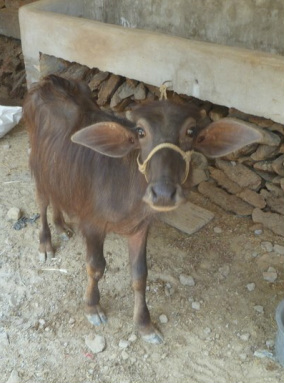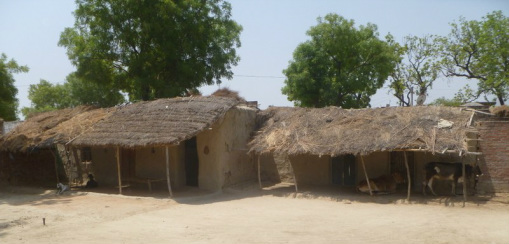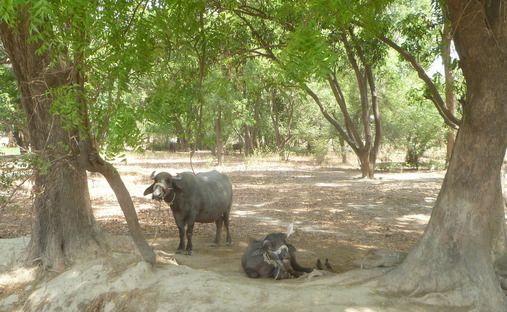
A baby water buffalo with full-grown ears!
This past week we had the privilege of visiting A.’s Indian colleague and his family in their village. This colleague is a very thoughtful community worker with a heart for the poor and a knack for building relationships and disarming people with his gentle demeanor. It’s not unusual for him to begin his workday in the wee hours of the morning helping his father to harvest a field of their crops before commuting into the city to meet up with A. for work, so our friend’s life is still very much rooted in the village and it was nice to see more of that side of his life. It was nice to get away from the noise and the crowds of the city and reconnect with nature again. We slept on the roof under the stars, enjoyed seeing lots of beautiful birds (and even a wild fox!), and explored the fields and dirt roads with our friend.
It was amazing to see how in tune the villagers are to nature, and how knowledgeable and creative they are about making use of the natural world. Our first morning there, he taught us how to harvest our toothbrushes and toothpaste directly from the tree: we broke off small twigs from a neem tree and used the frayed ends to scrub our teeth, just like the locals. We have seen neighbors doing this before, even in the city, but had never tried it ourselves. Surprisingly, this neem stick method really seemed to get the job done! But there’s a reason you’ve never seen neem-flavored toothpaste in stores—it’s incredibly bitter.
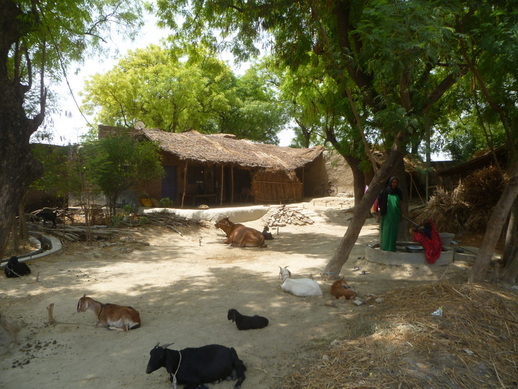
Our ideal homestead.

The ornately carved wooden doorway of our friend’s ancestral home. The house is over one hundred years old!
People were very laid-back and friendly. Our host addressed everyone we met as “Uncle” or “Grandma” or some other relative. Many of them are his blood relatives, but even the ones who aren’t have grown up alongside him or parented him nearly as much as they have their own children. When we visited his ancestral house, three of his uncles had tea with us and showed us around the inside courtyard. We were pleasantly surprised by how normally everyone treated us during our stay, because as foreigners we often attract a lot of attention. We eventually realized that most of the people we met didn’t know that we were foreigners!
These beautiful homes are made from mud, bamboo, and the dried branches of lentil bushes. They belong to families of so-called Dalits, or “Untouchables.” In the past, this part of the village probably would have been quite segregated from the rest of the community, and our host told us that even today the Dalits in his village remain landless and therefore earn their income by working in other people’s fields.
The injustice rooted in traditional customs around caste and gender makes up the shadow side of this otherwise peaceful, agrarian community. Our host says he knows of several “honor killings” that have been carried out in the village– murders of either young women or couples who have violated the sexual norms of the community or have chosen a relationship which their families disapproved of.
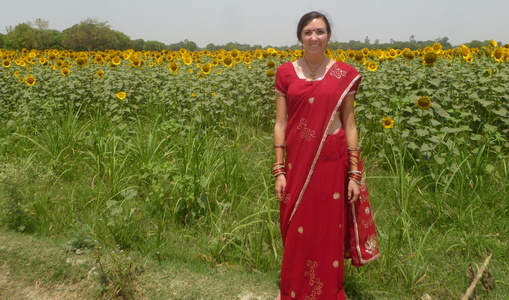
A field of sunflowers being grown to sell.
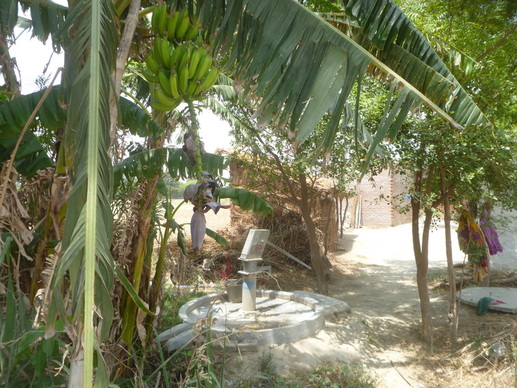
Wells and hand pumps like this one supply water to the village.
Our friend says that over the past 10-15 years, the climate of the area has been slowly changing. Right now, the fields are already unusually dry and he fears that monsoon may come late this year. Such fluctuations in weather can be disastrous for subsistence farmers like our friend’s family and neighbors who depend completely on the seasons and the land for their survival. Those who can no longer make ends meet on the farm will eventually end up living in slums in the city, so the problems of rural and urban India are deeply interconnected.
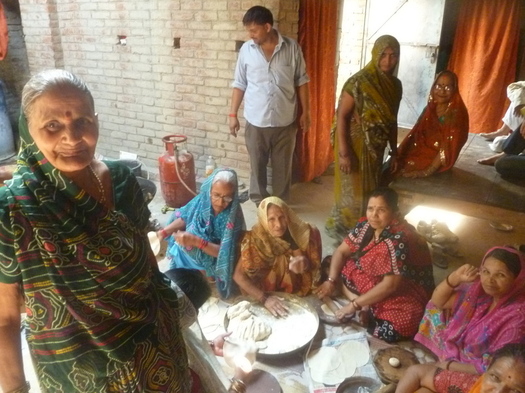
The puri-making circle: these aunties are busily working away to make enough fried bread for the dozens of guests who are about to descend on the house!
The main events of our visit were related to the upcoming wedding of our friend’s younger brother: a puja, or worship ceremony, followed by the Tilak, another ritual (between the groom and the brother of the bride) during which the bride’s family brings gifts to the groom’s family, who then hosts them for a feast in which both extended families celebrate the impending marriage.

The Brahmin priest, or Pandit, presides over the puja for the groom.

The groom’s parents (foreground) and the pandit (center) make preparations before the Tilak.
The ceremonies were interesting to watch, but having the house crowded with more than two-hundred guests made the second day significantly less restful than the first! In the villages, there is only electricity for a few hours each day–much worse than the power cuts we get in the slum. In this case, those hours were approximately 9 p.m.-6 a.m., with a few sporadic moments throughout the day. Temperatures were well above 100 degrees fahrenheit, but body heat certainly pushed them even higher inside the house!
It was fascinating to experience a slice of rural Indian life. The village is really the heart of the city, since nearly everyone is a recent migrant from the countryside. Seeing the rhythms of family and work life in the village sheds light on our neighbors’ approach to life in the slum, and gives us a greater appreciation for their previous life experiences. However, meeting so many people and having no control over when we eat, sleep, or do anything else over an extended period of time can also be a stressful experience, so we were just as thankful to return to the familiarity of the city afterward!
